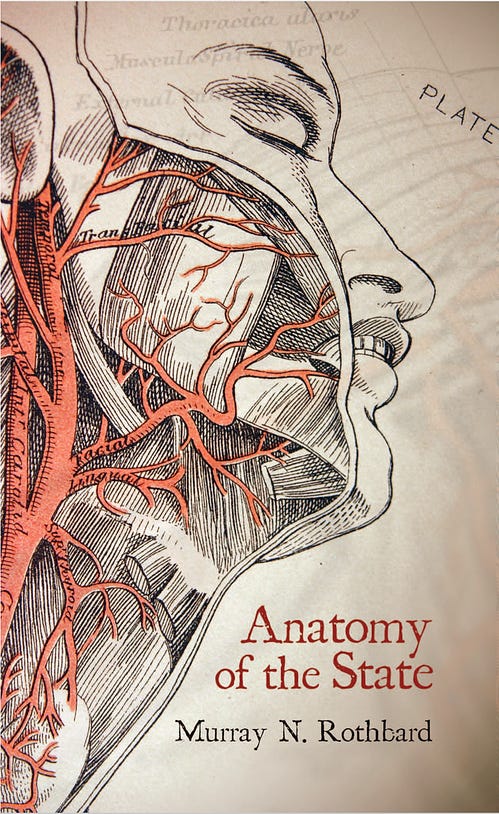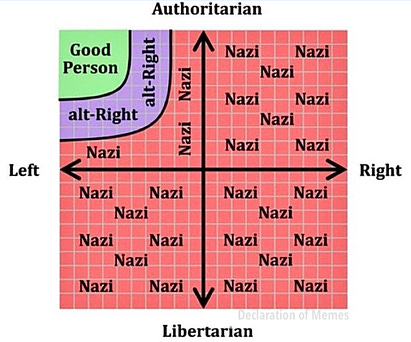Since vacc!nes were first invented, governments and the medical profession have had a compulsive need to defend the products, regardless of how much they hurt people, how much they fail to work, or how unnecessary they are (e.g. because the disease in question is unlikely to ever harm people or a safe and effective treatment for it already exists).
My best guess to explain this phenomenon is that the vaccination meme is extremely appealing to the ruling class because it provides a simple solution (injecting everyone) for a complex problem (ensuring the health of the nation), and is relatively easy to implement since all it requires is a leader doubling down using the force of the state against anyone who does not comply (which leaders often default to doing for a variety of problems).
Unfortunately, since life is not that simple, this approach always falls short and requires leaders and governments who commit to it to then cut a lot of corners as problems inevitably arise. As a result, some of the recurring themes you see in the forgotten vaccine disasters include:
Creating an “emergency” situation which is used to justify cutting corners on vaccine. |
Assuming rather than verifying that the vaccine actually works before giving it to the population. |
Burying data or test results that show the current vaccine should not be given to human beings and gagging government scientists who raised concerns about the product. |
Allowing a dangerous and unsafe process be used to mass produce the vacc!nes. This commonly occurs when switching from the clinical trials (which requires a much smaller amount of the vaccine to be produced) to the general market. |
Choosing a cheaper (and hence more profitable) production process rather than a safer (but more expensive and thus less profitable) vaccine production process. |
Having everyone repeat the mantra that “the vacc!nes is safe and effective” and that there is no evidence to the contrary — to the point medical professionals come to believe this is so even when they see the injuries with their own eyes. |
Note: Since there is so much money in vaccination (and the government’s stamp of approval means most of the country will buy each new vaccine), a robust apparatus (discussed here) now exists to bribe politicians and the mass media to push those products and bury any red flags that emerge along the way.
One of the best explanations I’ve seen to explain why the government will never reconsider the more dangerous vacc!nes can be found within this 2011 WHO statement:
The VAERS Compromise
Recognizing that it was critical for the public to have a way to report vaccine injuries which bypassed this corrupt system, the parents demanded that the vaccine legislation included a provision for such a reporting system.
For this article, I reached out, Barbara Loe Fisher, the founder of the National Vaccine Information Center, who shared the following with me:
“Dissatisfied Parents Together (DPT) was founded in 1982 by DPT vaccine injured children. When we were asked by Congress to participate in legislation to protect the childhood vaccine supply in the U.S. due to threats by vaccine manufacturers that they would stop producing childhood vacc!nes unless they were given a total liability shield from vaccine injury lawsuits, among the conditions we set for our coming to the table was that the legislation:
1. Had to put equal emphasis on preventing vaccine reactions, injuries and deaths through the institution of vaccine safety provisions, one of which would be a centralized Vaccine Adverse Events Reporting System (VAERS) that would be open and accessible to the public for input of vaccine reaction reports, as well as viewing of reports made.
2. That the legislation could not completely shield the vaccine manufacturers from liability or shield negligent doctors from medical malpractice lawsuits.
There was no compromise on either of those two points. When the Act was passed in November 1986, it contained vaccine safety informing recording, reporting and research provisions (including VAERS). Those safety provisions were unique contributions of the co-founders of NVIC (Dissatisfied Parents Together became the National Vaccine Information Center (NVIC) in the late 1980’s).
When the Act was passed in 1986, the doctors and other vaccine administrators were still liable for medical malpractice and the vaccine manufacturers were still liable for product design defect (failure to make the product safer). The law was gutted after it was passed by congressional amendments, rule making authority by H.H.S. and, in 2011, by the US Supreme Court.
Yes, we insisted that VAERS be open to the public in terms of being able to directly report to the system when doctors refused to make vaccine adverse event reports and we wanted all reports made to VAERS to be transparently accessible and able to be viewed by the public.
VAERS is a unique vaccine reaction reporting system because it is transparent and researchers around the world have used it – including CDC researchers – to publish studies on vaccine adverse events. VAERS, as you know, played a key role in raising public awareness about the reactivity of COVID-19 vacc!nes.
Dr. Fauci had nothing to do with creation of the 1986 Act [this was in response to one of my questions]. That legislation, which had bipartisan support in Congress from the beginning, was created over a four and a half year period by the legislative staffs of Rep. Henry Waxman, Senator Edward Kennedy and Sen. Orrin Hatch in consultation with the co-founders of Dissatisfied Parents Together and American Academy of Pediatrics.
Environmental law attorney Jeffrey Schwartz, whose daughter was brain injured and then died from a DPT vaccine reaction as an infant, was the first President of NVIC and was the primary negotiator on behalf of NVIC on Capitol Hill during the creation of the Act.”
Note: Because of their work, the Act also had a stipulation requiring the Department of Health and Human Services to create a task force devoted to researching ways to develop safer vacc!nes and to produce two reports each year for Congress on that work. A 2018 lawsuit from ICAN and the CHD proved that the H.H.S. failed to do this.
That is one an example of how the H.H.S. will often willfully omit doing things it is legally required to do. Another were investigations that showed Fauci and his lackeys over and over would find ways to avoid disclosing to their research subjects that they were making money off those experiments (despite being legally required to and repeatedly requested to).
What Happened to VAERS?
Because of the 1986 law, a curious situation was created. The government was forced to create VAERS even though it desperately did not want anything to exist that could show the public the dangers of the vaccine program.
As a result, a concerted effort was done to undermine VAERS as much as possible so that it could not “weaken public support of the vaccine program.” Similarly, consider the previously mentioned example of the H.H.S. scrapping a system which showed VAERS was identifying less than 1% of vaccine injuries.
In turn, the VAERS we have today is a dysfunctional mess and a far cry from what had been promised in 1986. Nonetheless, it’s the best we’ve got, and enough data still exists that members of the public have been able to sort through it and discover just how dangerous the vaccine program is.
After it became clear the public VAERS database had serious issues, a group of data scientists got together and produced OpenVAERS, a laborious attempt to clean up VAERS and make it functional enough to be accessible to the general public. Because of this, OpenVAERS in their FAQ provide one of the most poignant pictures of the current state of VAERS. For example, through their research, they learned:
The American Academy of Pediatrics stated "In 2012, [VAERS] reports were received from health care providers (41%), manufacturers (29%), other sources (17%) and vaccinees or families (14%)," while the CDC in 2020 stated “The majority of VAERS reports are sent in by vaccine manufacturers (37%) and health care providers (36%).
The remaining reports are obtained from state immunization programs (10%), vaccine recipients (or their parent/guardians, 7%) and other sources (10%).”
Note: Steve Kirsch has also proven that the management at VAERS is refusing to publicly acknowledge the safety signals the system is designed to detect.
The BMJ Investigation
Through their work, OpenVAERS (and others) were able to identify many pieces of evidence suggesting VAERS was deliberately withholding crucial data from the public and refusing to record or document many critical vaccine injuries.
These issues eventually prompted the BMJ (one of the top five medical journals) to investigate what was happening, and in turn formally corroborated what many of us have observed ever since the vacc!nes hit the market.
“VAERS is supposed to be user friendly, responsive, and transparent. However, investigations by The BMJ have uncovered that it’s not meeting its own standards. Not only have staffing levels failed to keep pace with the unprecedented number of reports since the rollout of covid vacc!nes but there are signs that the system is overwhelmed, reports aren’t being followed up, and signals are being missed.
The BMJ has spoken to more than a dozen people, including physicians and a state medical examiner, who have filed VAERS reports of a serious nature on behalf of themselves or patients and were never contacted by clinical reviewers or were contacted months later.
Our investigation has also found that, in stark contrast to the US government’s handling of adverse reaction reports on drugs and devices, the publicly accessible VAERS database on vacc!nes includes only initial reports, while case updates and corrections are kept on a separate, back end system.”
Specifically:
VAERS makes it difficult to enter reports into it. To quote the BMJ, “the format is cumbersome and it times you out,” (a story I have also repeatedly heard). |
VAERS makes it impossible to update an existing report to something more serious (e.g., to note that an injured patient then died). |
Often it took VAERS months to get back to someone (if they did at all) and frequently VAERS representatives provided conflicting information to the reporters or discouraged them from making a report all together. For example, doctors who reported fatal reactions in their patients were never contacted by VAERS. |
In a survey by React19 of 126 reported injuries, 22% were never made available on VAERS, while 12% initially could be found on VAERS were then taken down by the CDC. This means one-third of the reports VAERS received are being deliberately hidden from the public. Note: I also directly know of cases where this happened. |
Prior to COVID, VAERS received 50,000 reports each year, but only had the capacity to process a few thousand serious reports (which suggests VAERS was deliberately understaffed). |
VAERS has received 1.7 million reports since the rollout of covid vacc!nes, including 20,000 deaths. Yet the CDC has not linked a single one of those deaths to the vaccine, even though many other countries have. Note: There has been a lot of evidence suggesting the vacc!nes significantly increase your risk of dying (Ed Dowd has done an excellent job compiling the death data). Recently one of my colleagues was able to obtain a large data set of deaths in the elderly population and vaccination status (something we have been trying to get since the vacc!nes came out). It showed taking the vaccine roughly doubles your rate of dying for a few months — which is a big deal. |
Since COVID, almost 20% of the reports VAERS received were serious ones which were “required” to be followed up on. |
A team of physicians have repeatedly contacted the FDA to air their concerns that no one is following up with them about severe and fatal injuries they reported to VAERS. The FDA has responded by simply insisting that it is doing so — despite significant evidence to the contrary. |
Pfizer currently has around 1000 full time employees assigned to processing vaccine injuries reported to the company (this number may be as high as 1800). The CDC has declined to state how many it has assigned to VAERS, but the number is quite small as VAERS is a part of a department which only has between 70-80 employees in total. |
It is very difficult to get physicians to report reactions to VAERS if they have not already been told that the reactions might be associated with the vaccine. So by the FDA and the CDC refusing to raise the possibility other conditions could be linked to the vaccine, they are not appearing in VAERS, which in turn is being used to argue they do not exist. |
Conclusion
One of the greatest challenges we have faced with the vacc!nes is the steadfast refusal to acknowledge they could be harming people, despite the overwhelming degree of evidence we can all see with our own eyes that something very bad is happening.
Since the reliability of VAERS has played such a pivotal part of this discussion, I feel the BMJ’s investigation is critical for the current situation as it provides concrete proof the government is covering up this unprecedented wave of injuries.
In turn I would argue that VAERS’s systemic “failures” instead illustrate it is working exactly as intended — the government is doing everything it can to sabotage it but simultaneously it is still providing a way for the public to access the vaccine safety data Barbara Loe Fisher and her colleagues knew the government would do everything it could to hide from us.
I fully understand how hard it is to believe the government could do something like this. In this series, I hope I have provided an explanation for why such awful behavior is deeply engrained within a bureaucracy which has repeatedly proven it will do whatever it can to cover up the harms of vaccination — regardless of how much harm they cause.
So next time someone “educates” you by pointing out VAERS is not reliable, point out that VAERS is supposed to be our premier system for monitoring vaccine safety and ask them “why is there still nothing better?”
A Note From Dr. Mercola About the Author
A Midwestern Doctor (AMD) is a board-certified physician in the Midwest











